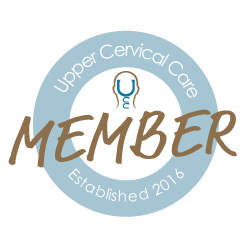Migraines are a debilitating condition affecting millions worldwide. The throbbing pain, nausea, light sensitivity, and other symptoms can disrupt daily life and leave sufferers searching for effective relief. At Anatomy Chiropractic, we believe in empowering our patients with knowledge and holistic solutions to alleviate migraines and improve overall well-being.
Understanding Migraines: Why Relief Is Complex
Migraines are not just severe headaches; they are a neurological condition involving multiple systems in the body. Symptoms can vary but often include:
- Intense, throbbing pain on one or both sides of the head.
- Sensitivity to light, sound, or smells.
- Nausea or vomiting.
- Aura, which includes visual or sensory disturbances before the pain begins.
This complexity makes finding effective migraine relief challenging but not impossible.
Common Migraine Relief Methods
Relieving migraines often requires a combination of lifestyle changes, therapeutic interventions, and natural remedies. Below are some proven methods for managing and preventing migraines.
1. Identifying and Avoiding Triggers
Triggers play a significant role in migraine onset. Identifying and avoiding these triggers is one of the most effective ways to prevent attacks.
Common Migraine Triggers:
- Stress and emotional tension.
- Sleep disturbances (too little or too much sleep).
- Certain foods and beverages, such as chocolate, red wine, and aged cheeses.
- Bright lights or loud noises.
- Hormonal changes, particularly in women.
How to Identify Triggers:
Keep a migraine diary to track symptoms, activities, and environmental factors that precede your migraines. Over time, patterns may emerge, helping you pinpoint specific triggers.
2. Hydration and Diet for Migraine Relief
Dehydration and fluctuating blood sugar levels are known migraine trigger. Maintaining a healthy diet and staying hydrated can significantly reduce the frequency and intensity of migraines.
Tips for Diet-Related Relief:
- Drink plenty of water throughout the day.
- Eat balanced meals at regular intervals to avoid blood sugar crashes.
- Incorporate anti-inflammatory foods, such as leafy greens, fatty fish, and nuts.
- Avoid processed foods and artificial additives.
3. Stress Management
Stress is one of the leading migraine triggers. Managing stress effectively can help prevent migraines and improve overall well-being.
Stress Relief Techniques:
- Practice mindfulness or meditation daily.
- Engage in regular physical activity, such as yoga or walking.
- Set aside time for hobbies and relaxation.
- Seek professional counseling if stress feels unmanageable.
4. Quality Sleep for Migraine Relief
Sleep and migraines are closely linked. Poor sleep quality or irregular sleep patterns can exacerbate migraines.
Healthy Sleep Habits:
- Stick to a consistent sleep schedule.
- Create a calming bedtime routine, such as reading or meditating.
- Avoid screens and stimulants like caffeine before bed.
- Keep your bedroom dark, quiet, and cool for optimal sleep conditions.
Complementary Therapies for Migraine Relief
In addition to chiropractic care, other natural therapies can support migraine management:
1. Acupuncture
This ancient practice involves stimulating specific points on the body to improve energy flow and relieve pain. Studies show that acupuncture can reduce the frequency and severity of migraines.
2. Massage Therapy
Regular massages help reduce stress, release muscle tension, and improve circulation, all of which can prevent migraines.
3. Physical Therapy
For individuals with migraines linked to posture or repetitive strain, physical therapy can strengthen muscles and improve alignment.
4. Essential Oils
Aromatherapy with calming scents like lavender or peppermint can help ease migraine symptoms when used during an attack.
When to Seek Medical Attention
While most migraines can be managed with lifestyle changes and chiropractic care, there are times when professional medical intervention is necessary. Seek immediate attention if:
- Your migraines suddenly become more severe or frequent.
- You experience neurological symptoms like confusion, vision loss, or paralysis.
- You have a headache after a head injury or with a fever.
Finding Migraine Relief at Anatomy Chiropractic
At Anatomy Chiropractic, we understand the challenges of living with migraines and are here to help. Our holistic approach addresses the root causes of your pain, providing personalized care for lasting relief.
Visit www.anatomychiropractic.com to learn more about our services and schedule a consultation. Discover the difference holistic care can make and take the first step toward a migraine-free life today.


